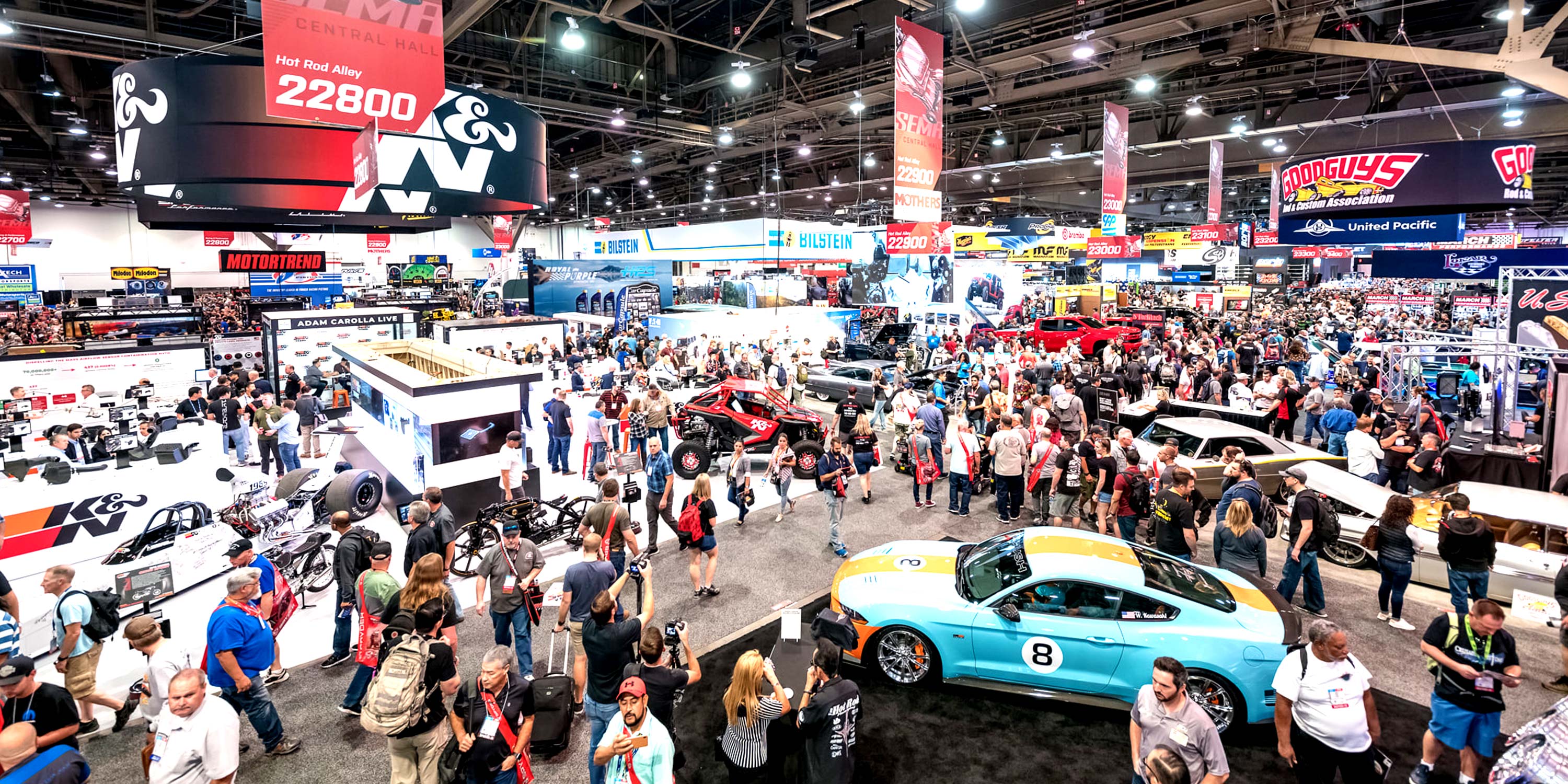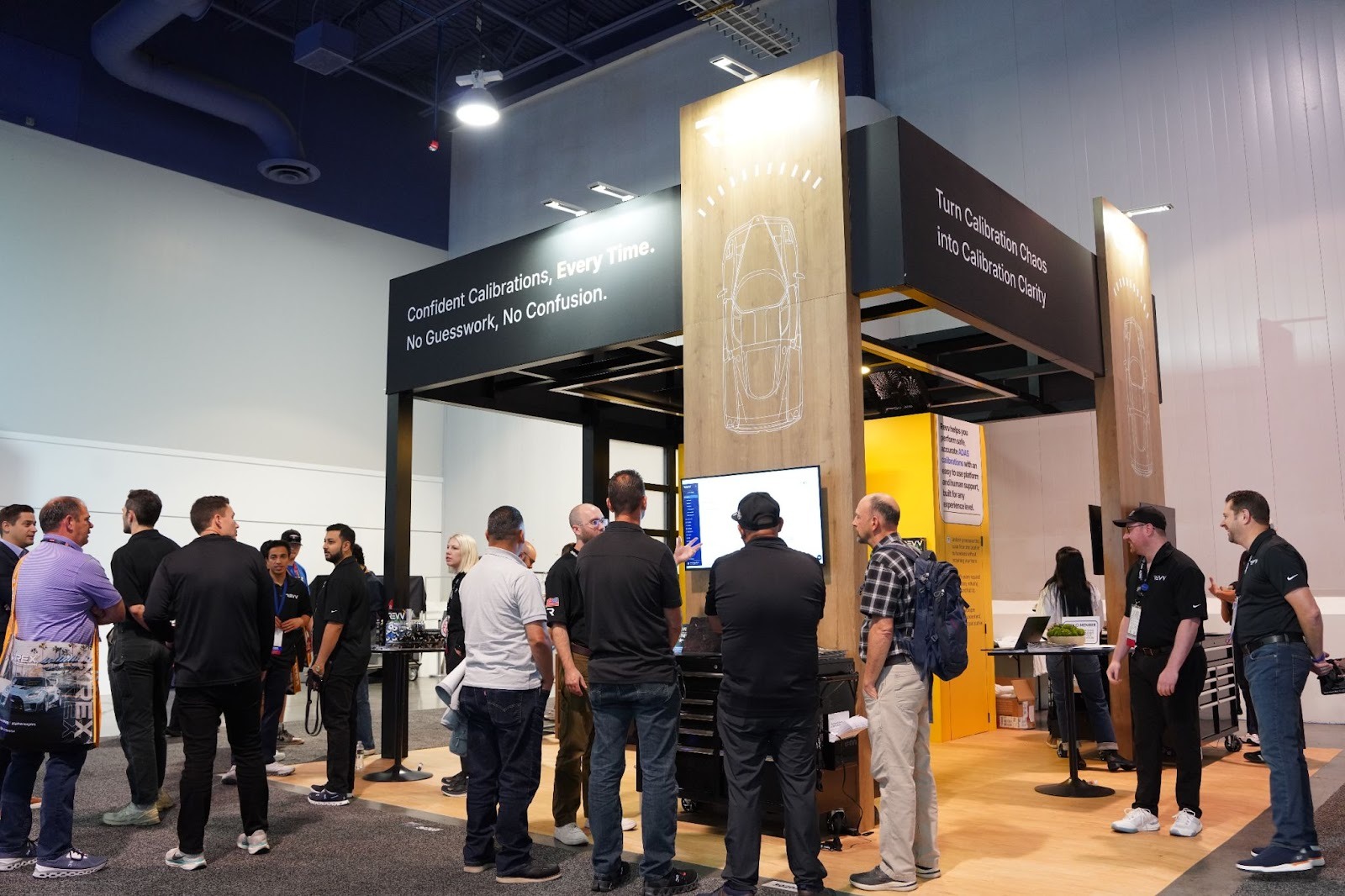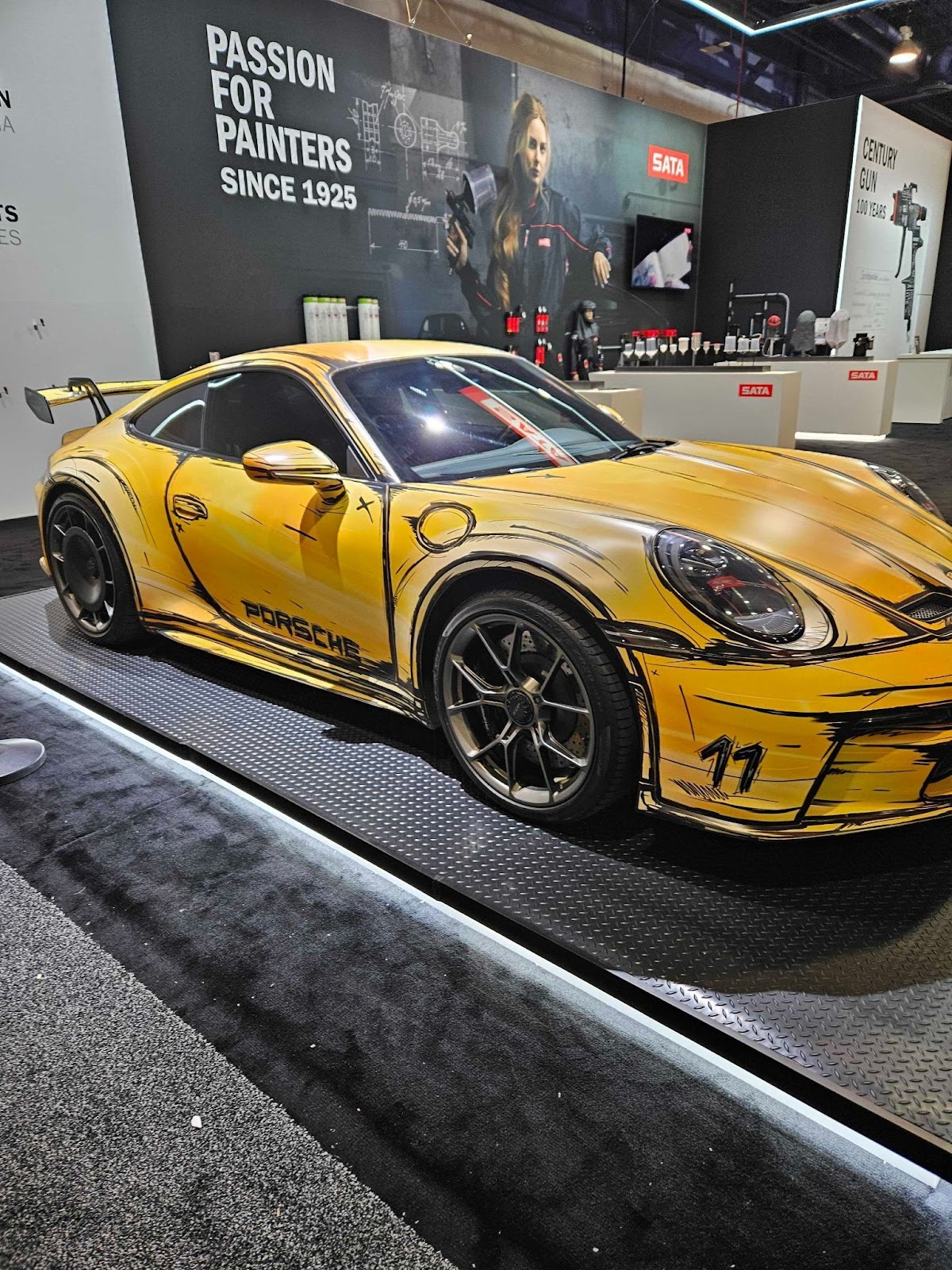Nine years of SEMA and what’s changed? Everything.
Reflecting on nearly a decade of SEMA: how ADAS calibration awareness transformed the collision repair industry.
November 12, 2025

I remember my first SEMA like it was…well, nearly ten years ago.
The first time I walked the many, many aisles, ADAS calibration was a non-issue. The technology existed in vehicles, but the repair implications barely registered on anyone's radar even if there was radar involved.
Last week’s SEMA put those early shows into stark contrast.
Every conversation I had with shops, insurers, and industry partners made clear that ADAS calibrations are top of mind from both a business standpoint and a safety one.
What changed in eight years is staggering. What hasn't changed is just as important.
Most still don't know what they don't know about ADAS
Even though ADAS awareness is there, in-depth knowledge still has a ways to go. Obviously we can’t paint everyone with the same brush. Insurers are going to have a different viewpoint than shops who’ll certainly think of things differently than consumers.
If I had to rank who understands ADAS calibration requirements least to most, consumers would top that list by a wide margin.
They want the technology. They love their blind spot monitoring, backup cameras, and adaptive cruise control. These features sell vehicles.
But ask them if these systems need recalibration after collision repairs, and you'll get blank stares.
That knowledge gap creates liability (and sometimes frustration) for everyone downstream.
Insurance companies land in the middle of my awareness ranking. They touch as many vehicles as shops do through claims files and documentation. They have enormous incentive to understand calibration requirements because their liability exposure is massive.
A missed calibration could mean a failed safety system, an accident, and a lawsuit pointing back to the claim they paid.
That said, there is genuine appetite from carriers to get this right. They want the information. They need the documentation. The challenge is getting it early enough in the repair process to act on it.
Shops see the problem and are hungry for more information
Shops should rank highest in calibration awareness, but we're not there yet.
I'm optimistic we're approaching a tipping point where calibration knowledge peaks and becomes standard practice. Shops are starting to understand they need to either build proper calibration capability in-house or establish relationships with qualified subcontractors.
The keyword there is "proper."
Not just anyone with equipment or is willing to offer it the cheapest. A qualified partner who follows OEM procedures and documents everything correctly.
And the quest to become that qualified partner was apparent in many of the conversations I had with shop owners of all sizes.
There was a high level of engagement this year from attendees. It was surprising yet wonderful to see.
It makes sense that the people who make the effort to be at SEMA are hungry for knowledge. They're talking with vendors, asking detailed questions, and genuinely trying to solve problems.
Our booth this year was a microcosm of this. We always had a consistent crowd asking us about our new integration with CCC or learning more about why we received a New Products Showcase award from SEMA.

People with specific challenges looking for specific solutions and seeking them out. That proactive mindset is exactly what the industry needs right now.
The shops winning are the ones identifying calibrations early
The one overarching trend of what I heard on the show floor kept circling back to one theme: be proactive on the front end of repairs.
Don't wait until you've got a warning light on the dash as you're reassembling the vehicle. Don't discover calibration requirements during your final inspection. Get ahead of it during your initial estimate and damage assessment.
When you identify calibration needs early and communicate them upfront, the conversation with the insurance company flows smoothly. They appreciate knowing what's coming. In 95% of cases, they're paying that bill anyway. Early communication removes friction.
One carrier representative told me this week: "Get us the information up front and things run smoothly. Don't wait until the end."
The end is where pushback happens. The end is where you create resistance and friction.
Nobody wants to see a $1,000 calibration invoice appear out of nowhere in the final days of a repair when they could have planned for it from day one.
Another surprise: vendors choosing partnership over competition
The most surprising and encouraging theme centers on collaboration.
Vendors and service providers are asking "How can we help? How can we connect?" rather than guarding their territory. People recognize that ADAS calibration is permanent. This work isn't going away.
The question is how we support each other as an industry.
There were countless conversations with independent vendors, calibration specialists, and industry partners about pulling together.
There's enough work for everyone. Geography doesn't have to limit us. Regional challenges don't have to stay isolated.
If you're in the Pacific Northwest dealing with specific carrier requirements, and a shop in the Southeast faces similar issues, we can share that knowledge. We can learn from each other's experiences. We can be the connection point that helps solve problems faster across different markets.
That collaborative spirit matters because the shops we serve need it. They're not competing with shops three states away. They're trying to deliver quality repairs, get properly compensated, and reduce their liability exposure.
When vendors and service providers work together instead of staying in our separate corners, shops win. When shops win, vehicle owners get safer repairs. When repairs are done correctly, insurers face less liability.
Everyone wins.
A Porsche near the front entrance exemplifies it all

There was a positively stunning Porsche near the front of the show floor. Absolutely gorgeous. I had to stop and take a picture and see if maybe the keys were on the sun visor (they weren’t).
That vehicle represents everything we're talking about.
It’s a feat of modern engineering, coupling precision-made parts with advanced technology and more lines of code than a fighter jet.
It's beautiful, it's sophisticated, and it demands expert handling when repairs are necessary.
That's the industry we're in now.
Eight years ago, I couldn't have predicted where we'd be today. ADAS calibration has fundamentally reshaped collision repair operations, insurance claim handling, and customer expectations.
The next eight years will bring challenges we can't anticipate yet. But if the conversations I've had this week are any indication, we're building the foundation to handle whatever comes next.
